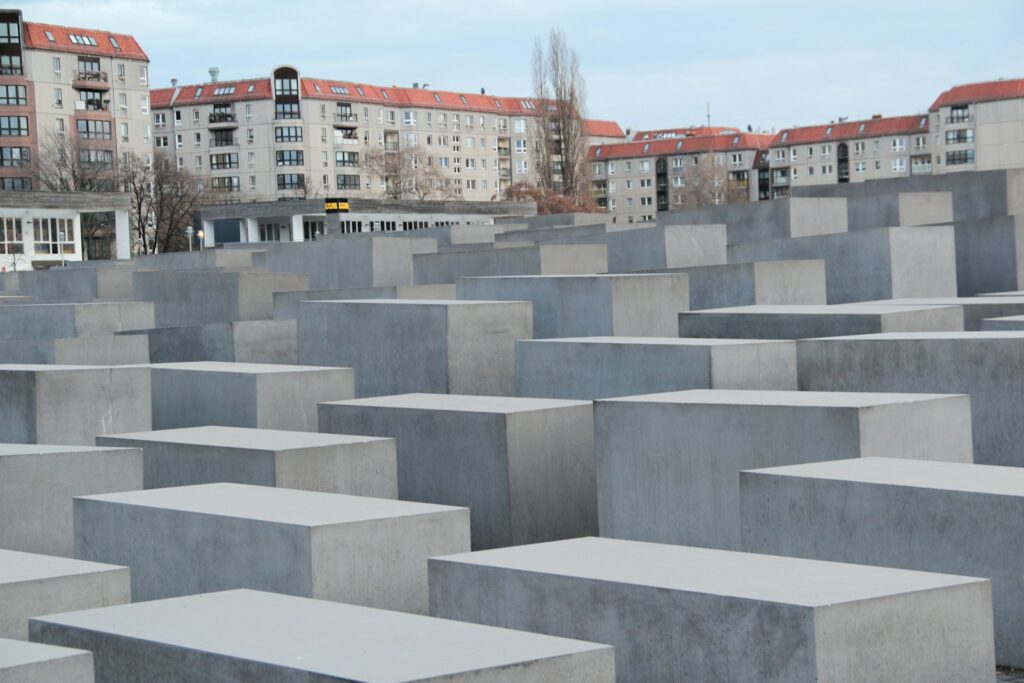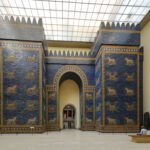The Holocaust Museum in Berlin, officially known as the Memorial to the Murdered Jews of Europe, stands as a solemn reminder of one of the darkest chapters in human history. Located in the heart of Berlin, this powerful memorial and museum serve to educate visitors about the atrocities committed during the Holocaust and to honor the memory of the six million Jews who perished. This article delves into the significance, features, and emotional impact of the Holocaust Museum Berlin, offering a comprehensive guide for travelers seeking a poignant and educational experience.
Historical Context
The Holocaust, also known as the Shoah, was a systematic, state-sponsored persecution and murder of six million Jews by the Nazi regime and its collaborators. It took place between 1941 and 1945, during World War II. The Nazis, led by Adolf Hitler, aimed to annihilate the Jewish population of Europe, viewing them as an inferior race and a threat to their vision of racial purity.
Berlin, as the epicenter of Nazi power, holds a significant place in this history. The Holocaust Museum Berlin, therefore, is not just a memorial; it is a critical site for understanding the extent of the atrocities and the impact they had on millions of lives.
Design and Structure
The Memorial to the Murdered Jews of Europe was designed by architect Peter Eisenman and engineer Buro Happold. It was inaugurated on May 10, 2005, and has since become a landmark of remembrance and education.
The Field of Stelae
The most striking feature of the memorial is the Field of Stelae, consisting of 2,711 concrete slabs or “stelae” of varying heights arranged in a grid pattern. The stelae are set on undulating ground, creating an uneasy, disorienting atmosphere that evokes feelings of loss and confusion. Walking through the narrow paths between the slabs, visitors often experience a sense of isolation and contemplation, mirroring the emotions associated with the Holocaust.
The Information Center
Beneath the Field of Stelae lies the underground Information Center. This center provides historical context and personal stories through exhibits, photographs, and documents. It is divided into four rooms: the Room of Dimensions, the Room of Families, the Room of Names, and the Room of Sites.
- The Room of Dimensions presents the scale of the Holocaust through quotes from victims.
- The Room of Families tells the stories of individual families, highlighting their lives before, during, and after the Holocaust.
- The Room of Names is dedicated to listing the names of Holocaust victims, providing a sense of the magnitude of the loss.
- The Room of Sites details the various locations where the atrocities occurred, such as concentration camps and ghettos.
Visiting the Museum
A visit to the Holocaust Museum Berlin is a deeply moving and educational experience. It is recommended to allocate several hours to fully absorb the exhibits and the atmosphere of the memorial.
Practical Information
- Location: The memorial is located near the Brandenburg Gate, at Cora-Berliner-Straße 1, 10117 Berlin.
- Opening Hours: The Field of Stelae is open 24/7, while the Information Center operates from 10 AM to 8 PM.
- Admission: Entry to both the Field of Stelae and the Information Center is free.
Guided Tours
To gain a deeper understanding of the Holocaust and the significance of the memorial, guided tours are available. These tours are led by knowledgeable guides who provide insights into the history and symbolism of the site. Audio guides are also available for those who prefer a self-guided experience.
Emotional Impact and Reflection
The Holocaust Museum Berlin is not just a historical site; it is a place of reflection and remembrance. Visitors often find themselves overwhelmed by the sheer scale of the tragedy and the personal stories of the victims. The design of the memorial, with its stark and imposing stelae, serves as a powerful reminder of the void left by the millions who perished.
Educational Importance
The museum plays a crucial role in Holocaust education. It serves as a resource for students, educators, and anyone interested in learning about this dark period in history. By confronting the horrors of the past, the museum encourages visitors to reflect on the consequences of hatred and intolerance, and to commit to preventing such atrocities in the future.
Conclusion
The Holocaust Museum Berlin is a vital institution that honors the memory of the victims of the Holocaust and educates future generations about the dangers of prejudice and hatred. Its powerful design and comprehensive exhibits offer a profound experience for all who visit. As a traveler, taking the time to explore this memorial is not only an act of remembrance but also a step towards understanding the importance of tolerance and human rights.



